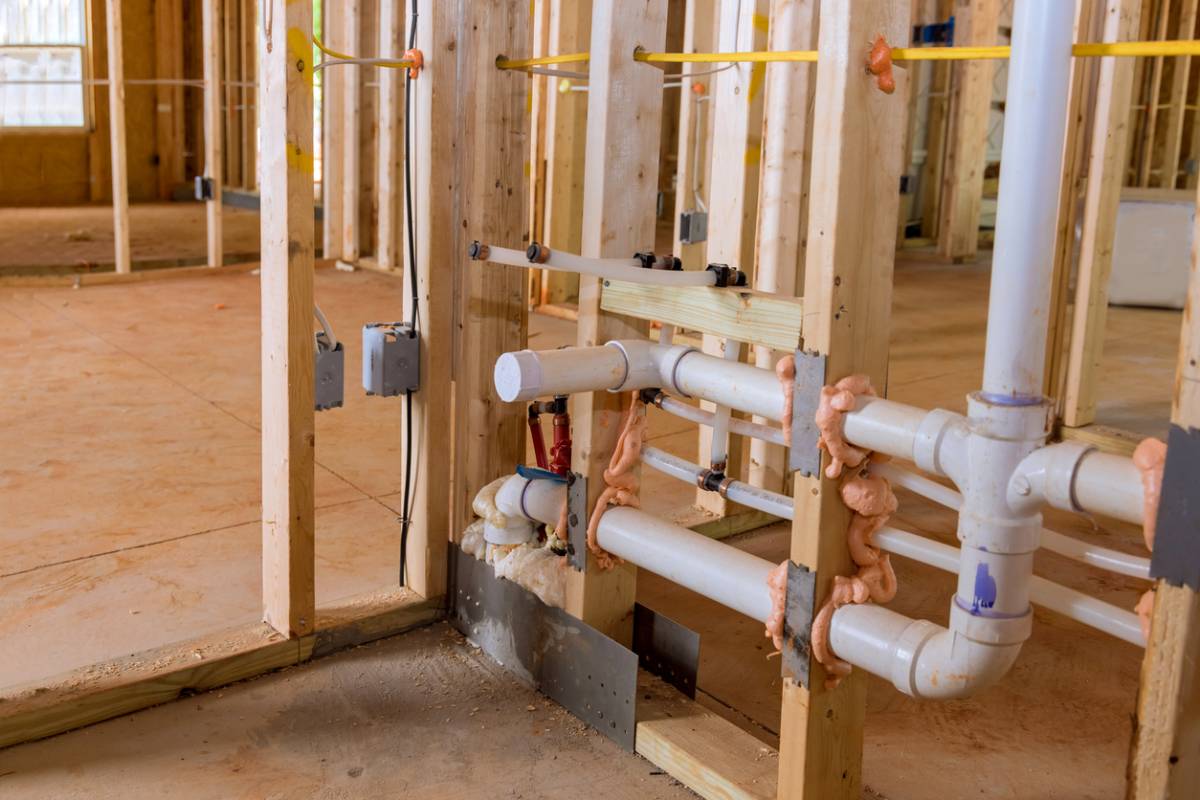The first things that people usually think about when building a new home are the interior design, architectural style, and layout of the home. Although plumbing is not necessarily something that is on top of the minds of homeowners, choosing the right plumbing system is one of the most important decisions. The type of materials used significantly affects water quality, energy efficiency, maintenance costs, and resale value. Because of technological advances and changes in building codes, today’s modern homes are constructed with a variety of plumbing materials that fit different needs and budgets. Even homeowners with existing homes can use these plumbing materials if they want to upgrade their piping systems. Working with professional repiping specialists can help them make wise decisions that will not only help them avoid costly mistakes but will also help raise the resale value of their home. If you are building a new home and wondering what type of plumbing is being used in new homes today, here is a list of the most common types of plumbing used in new homes, along with what makes each one a popular choice.
What Type of Plumbing Is Used in New Homes?
PEX (Cross-linked Polyethylene)
PEX is the most popular choice in new construction plumbing. It has become the go-to material for residential plumbing systems because of its ease of installation and resistance to scale and chlorine. It is also flexible, which makes it resistant to freezing and bursting, unlike traditional pipes.
PROS:
- Flexible and easy to route through walls and small or tight spaces
- Fewer fittings are required, which means reduced potential leak points
- Cost-effective in comparison to copper
- Durable and can last for 50 or more years
CONS:
- Should not be used outdoors or exposed to sunlight because of its sensitivity to UV light
- Requires specific fittings or tools for installation
PVC (Polyvinyl Chloride)
Usually gray or white and often found in the drainage system of new homes, they are strong, lightweight, and inexpensive. These features make them ideal for transporting wastewater and venting sewer gases.
PROS:
- Affordable and easily available
- Easy to cut and connect with solvent cement
- Resistant corrosion and damage due to chemicals
CONS:
- It can warp when used with hot water applications
- Prolonged UV exposure can make it brittle over time
CPVC (Chlorinated Polyvinyl Chloride)
CPVC is a step up from PVC when it comes to hot water applications. Although similar in appearance to PVC, it can handle higher temperatures because it has been treated with chlorine. It can be used for both hot and cold water supply lines in new homes.
PROS:
- Can withstand higher temperatures
- Resistant to corrosion and chemical buildup
- Reduced friction loss due to smooth interior surface
CONS:
- More expensive than PVC
- Becomes brittle in very cold temperatures
- Not as flexible as PEX
Copper
Copper is the traditional choice in many homes because it has withstood the test of time and can hold both cold and hot water. Although it is more expensive and labor-intensive to install, copper piping is considered a high-quality option, and it is used in custom homes and in areas where building codes are strict.
PROS:
- Extreme durability
- Long-lasting
- Resistant to bacteria
- Can handle high pressure and high temperature
CONS:
- Expensive material and labor
- Susceptible to corrosion in certain water conditions
- Challenging to install because it is not flexible
ABS (Acrylonitrile Butadiene Styrene)
ABS is a black plastic pipe used in older homes but is still found in some new homes. It is similar to PVC in application and appearance. It is not commonly used today because newer codes favor PVC for safety and environmental reasons.
PROS:
- Lightweight and easy to install
- Resistant to freezing
- Strong and impact-resistant
CONS:
- Code restrictions may prevent use in all areas
- Warm temperatures may cause it to warp
Each type of plumbing material has its place in today’s homes. Your choice will depend on your priorities, budget, longevity, or ease of installation. Today’s top choice for water supply lines is PEX piping, while PVC dominates drain and waste systems. For those looking for both durability and performance, copper is the premium choice despite its price.
Plumbing Assistance with Henrik Plumbing
Consult with a licensed plumber or a design-build expert because they can provide you with expert guidance that will allow you to choose the best material for your local climate, weather conditions in your area, and your budget. Call us today to receive the best guidance for your home piping project.
